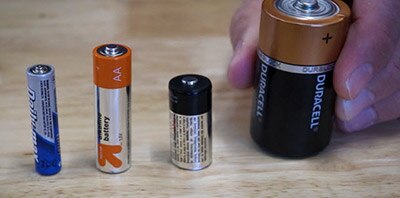DIY Soft Robotics - Dielectric Elastomer Dot Actuator
2024-03-15 | By Mario De Lorenzo
License: Attribution
Introduction
Dielectric elastomers are a fascinating class of smart materials that have captured the attention of scientists and engineers worldwide. These unique materials combine the mechanical properties of traditional elastomers with the electrical properties of dielectrics, making them a versatile and promising technology with a wide range of applications. While the concept of dielectric elastomers may sound complex, their practical uses span from simple everyday devices to cutting-edge technology in various industries.
How They Work
Dielectric elastomers operate on a simple yet ingenious principle. At their core, they consist of a soft, stretchy elastomer film sandwiched between two compliant electrodes. When a voltage is applied across these electrodes, it induces an electric field within the elastomer, causing the material to compress and change shape. This change in shape is reversible and directly proportional to the applied voltage. The unique property of dielectric elastomers is their ability to undergo substantial deformation under relatively low electrical forces. This property is due to the large strain response of elastomers and their excellent dielectric properties. By carefully controlling the voltage, researchers and engineers can precisely manipulate the shape and mechanical behavior of dielectric elastomers, opening up a world of possibilities for applications.
Applications
The versatility of dielectric elastomers has led to a wide range of applications across various fields. In robotics, they are used to create soft, flexible actuators that mimic the movement of muscles and enable more natural and safer interactions between humans and robots. Dielectric elastomers are also utilized in the field of haptic feedback, enhancing the user experience in touchscreens, gaming controllers, and virtual reality devices by providing realistic tactile sensations. Furthermore, these materials find use in energy harvesting, where they can convert mechanical energy, such as vibrations or deformations, into electrical energy, offering a potential source of power for small electronic devices. As researchers continue to explore and refine the capabilities of dielectric elastomers, their potential impact on technology and our daily lives is bound to expand even further.
How to Make a Dot Actuator
A dot actuator using dielectric elastomer is a specialized device that utilizes the unique properties of dielectric elastomers to produce localized, precise mechanical motion in the form of a "dot" or small displacement. Dielectric elastomers are soft, stretchy materials that deform when an electric field is applied to them. In the context of a dot actuator, these materials are engineered to create a controlled deformation at a specific point or area, resembling the movement of a dot.
This is what you will need to make a dot actuator:
- a frame (any material is fine as long as the surface is smooth)
- glue or double-sided tape
- an elastomer (I have used a 50um width silicone membrane)
- a pre-stretcher
- a scalpel
- a brush
- High-voltage supply with alligator clips
- carbon black ink (I have used NyoGel 756G, Newgate Simms limited)
Optional:
- a mask
- copper tape
- screws
I have used a laser cutter to cut the frames of the ring frame. The outer circle is 7cm, and the inner circle is 6cm. The four small circles around the frame are 4mm, but you can adjust them for the screws you have. I have used the laser cutter to cut the masks since I want to make the logo of DigiKey as an actuator, but you can use any shape or logo you want. A circle would be the best and easiest.
On top of the ring frame, I have applied double-sided tape. I apply the silicone membrane on top of the prestretcher. Pre-stretching a silicone membrane is essential to optimize the performance and reliability of dielectric elastomer actuators and similar devices. It helps counteract hysteresis, improves efficiency, and ensures the membrane operates within its linear range. Over-stretching initially compensates for relaxation over time, and fine-tuning the strain afterward allows for precise control while avoiding potential damage to the membrane. This approach results in a more stable and predictable actuator performance.
When pre-stretching, it is common to intentionally stretch the silicone membrane beyond its target operating range. This is done because silicone has a tendency to relax over time and lose some of its initial stretch. By initially over-stretching, you compensate for this relaxation and ensure that the membrane will settle into the desired, stable state during operation. I usually over-stretch to 40% and then turn it down to 30%. Take a marker and a ruler and make two dots at a 5cm distance. The two dots should be on an imaginary line passing through the center of the silicone membrane. Pre-stretch the membrane to 40% (measure the distance between the two dots, when they are at 7cm turn it down to 6.5cm).
Take the frame and attach it to the silicone membrane. Make sure the pre-stretcher stays at 30%. Make sure the glue/tape is attached to the silicone membrane, and then use the scalpel to remove the excess silicone membrane.
Now, you can apply the carbon black on the top and bottom of the pre-stretched silicone membrane. Use the shape you desire, but make sure the top and bottom sides are symmetrical.
Next, apply copper tape on two opposite holes on the frames and connect the copper tape to the dot actuator. Make sure whatever logo or writing you do everything is connected. You can see in the middle there is a line connecting all the writing, so there is a flow of current on all the letters. With the help of the scalpel, make holes in the middle of the copper tape so that the screws can pass through. Carbon black can be really dirty so try to not touch it and clean everything that touches the carbon black. The screws are meant so the alligator clips don't touch the carbon black.
It is time for the fun part. Take your high-voltage supply (at least 2kV to see some actuation), and attach it with alligator clips. I suggest connecting the ground to the top side for security measures. Have fun creating different dot actuators and use them in your project! Just make sure to protect yourself from the high voltage!

Have questions or comments? Continue the conversation on TechForum, DigiKey's online community and technical resource.
Visit TechForum










 中国
中国